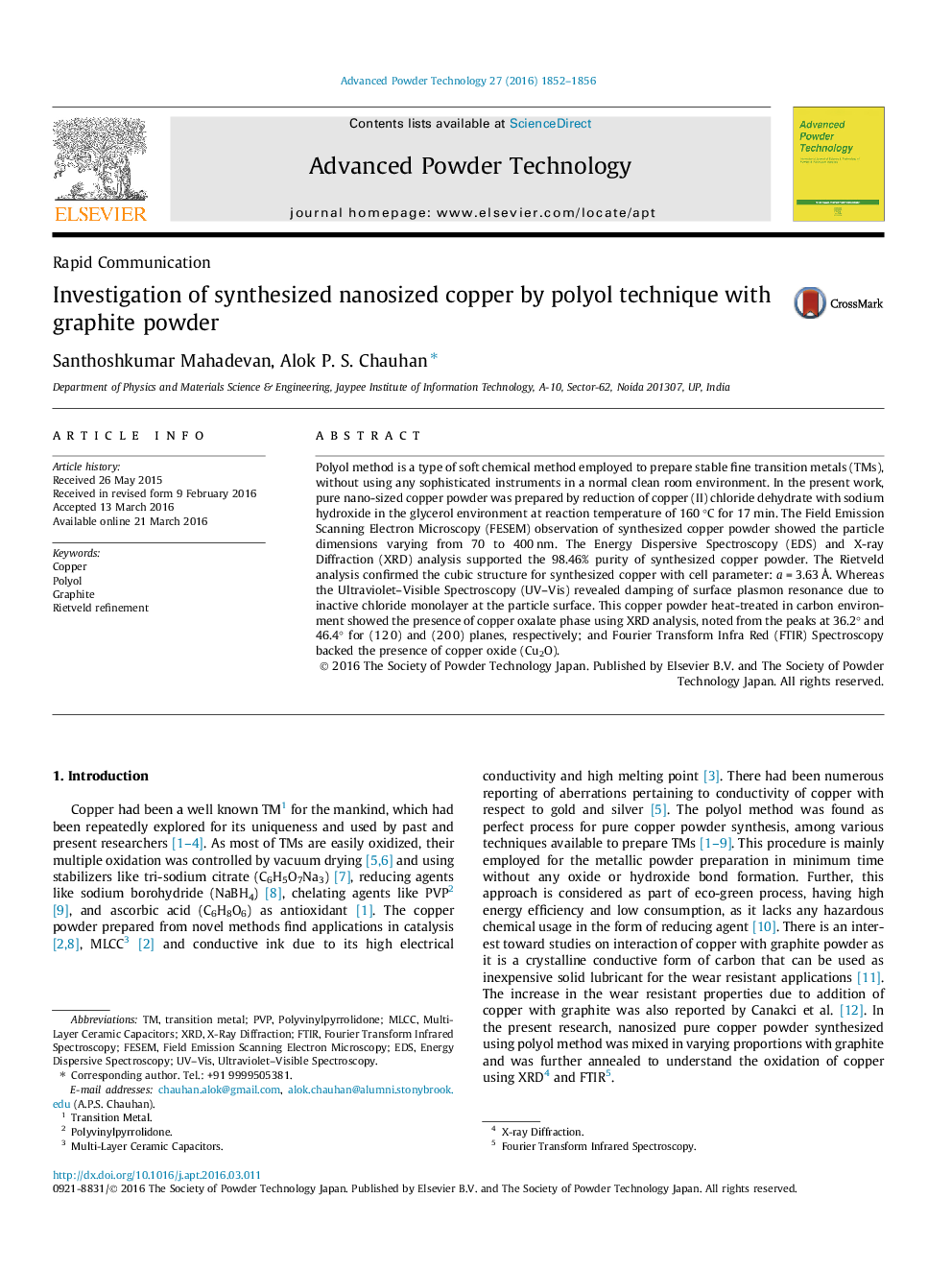| کد مقاله | کد نشریه | سال انتشار | مقاله انگلیسی | نسخه تمام متن |
|---|---|---|---|---|
| 143981 | 438916 | 2016 | 5 صفحه PDF | دانلود رایگان |
• Pure nanosized copper particles prepared via polyol process without oxide phase.
• EDS analysis confirmed the presence of 98.5% purity of nanosized copper.
• Rietveld refinement endorsed standard lattice parameters of copper.
• Existence of copper oxalate in copper graphite mixtures was verified using XRD.
Polyol method is a type of soft chemical method employed to prepare stable fine transition metals (TMs), without using any sophisticated instruments in a normal clean room environment. In the present work, pure nano-sized copper powder was prepared by reduction of copper (II) chloride dehydrate with sodium hydroxide in the glycerol environment at reaction temperature of 160 °C for 17 min. The Field Emission Scanning Electron Microscopy (FESEM) observation of synthesized copper powder showed the particle dimensions varying from 70 to 400 nm. The Energy Dispersive Spectroscopy (EDS) and X-ray Diffraction (XRD) analysis supported the 98.46% purity of synthesized copper powder. The Rietveld analysis confirmed the cubic structure for synthesized copper with cell parameter: a = 3.63 Å. Whereas the Ultraviolet–Visible Spectroscopy (UV–Vis) revealed damping of surface plasmon resonance due to inactive chloride monolayer at the particle surface. This copper powder heat-treated in carbon environment showed the presence of copper oxalate phase using XRD analysis, noted from the peaks at 36.2° and 46.4° for (1 2 0) and (2 0 0) planes, respectively; and Fourier Transform Infra Red (FTIR) Spectroscopy backed the presence of copper oxide (Cu2O).
Figure optionsDownload as PowerPoint slide
Journal: Advanced Powder Technology - Volume 27, Issue 4, July 2016, Pages 1852–1856
